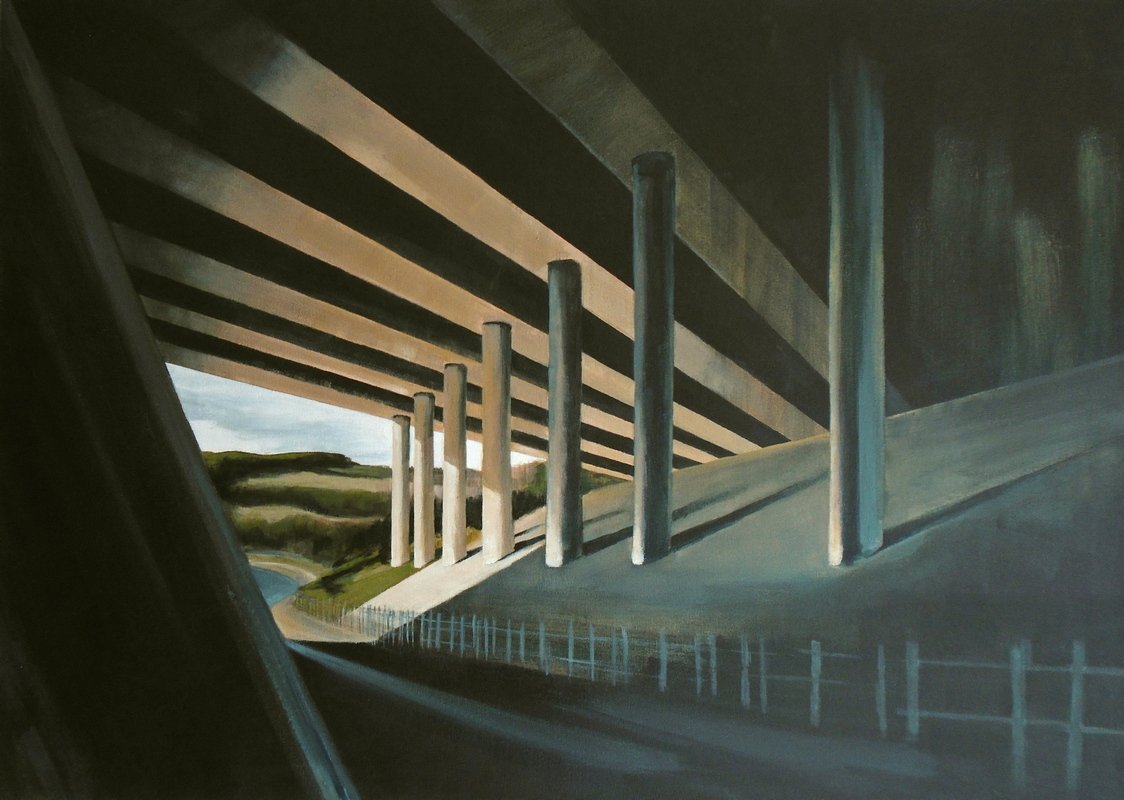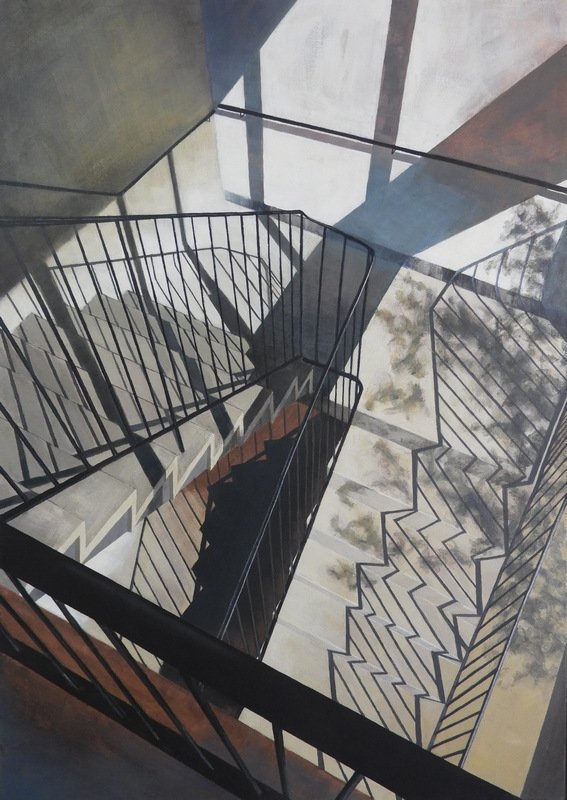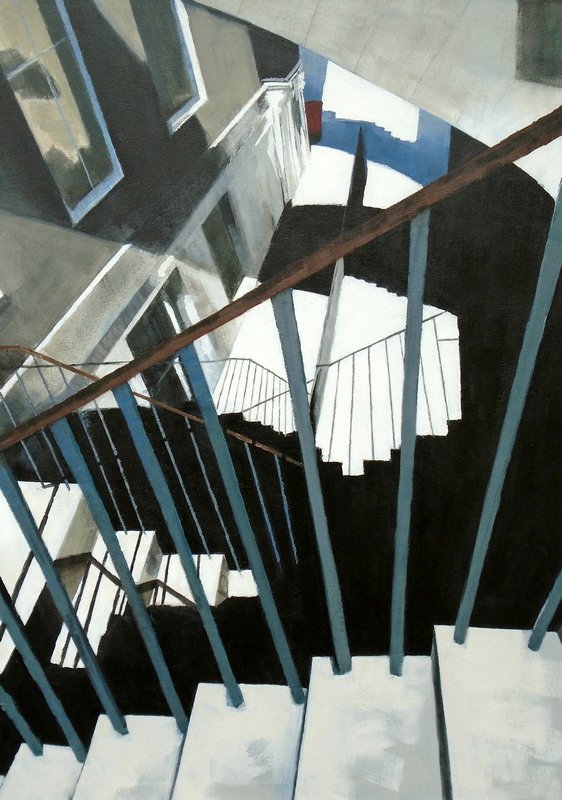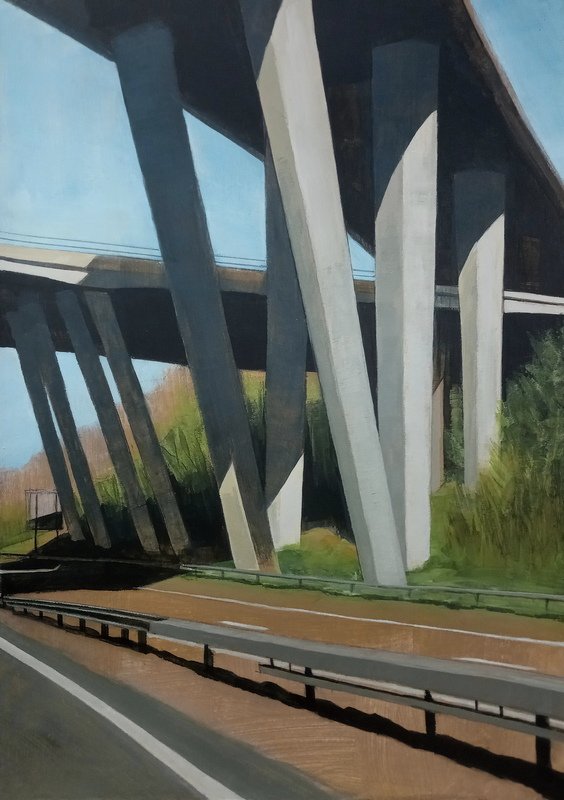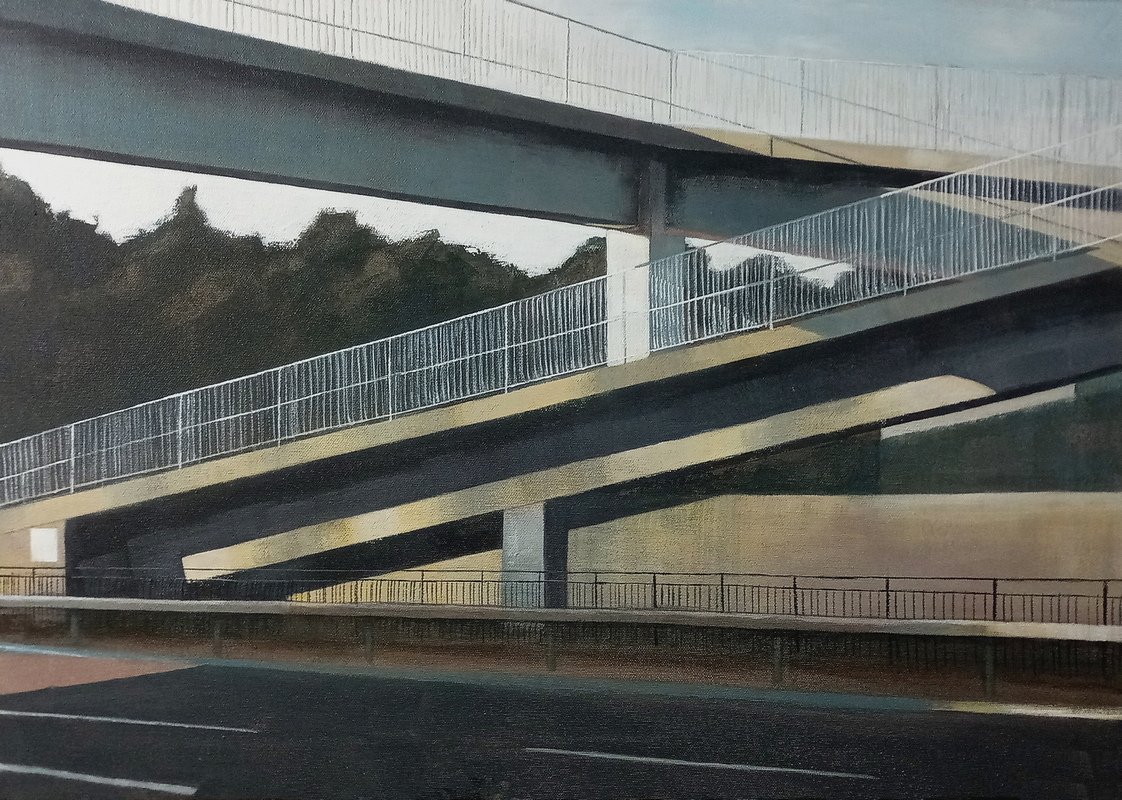ARTIST INTERVIEW: Lindsey Lavender
Tell me about yourself. How has your background in architecture been influential to your artwork?
I originally trained, qualified and practised as an architect, studying and working in both Birmingham as an undergraduate, and Edinburgh as a postgraduate. This background had a formative influence on me and has led my art practice, with my love of the built form showing throughout my work.
Why did you decide to leave your practise as an architect to become a painter?
As I became more senior in architecture, my day-to-day work shifted away from hands on design, drawing etc. to more contractual and managerial roles, which I was becoming dissatisfied with. I planned a career break to start a family and continued with art, as I have always done, in my spare time. I took part time courses at Edinburgh College of Art. Through support and encouragement of my tutors there, my work developed and blossomed, leading into a new career.
You’re fascinated with how light interacts with the mundane, specifically structures such as; stairs and doorways. Why is this? How do your paintings add beauty to your subjects, which are often overlooked?
I have always had a fascination with the way in which light and shadows play, and if there’s a chunk of concrete involved in the interaction, all the better! I love the patterns that light makes on structure, dappled though leaves, zigzagged onto stairs. I am interested in the way in which transitional spaces suggest a narrative, or lead a line of enquiry; What’s up there? What’s through the door? etc.
What makes a structure interesting to you? What do you look for when finding potential subjects to paint?
I have always loved brutal architectural forms and the way they contrast with the world around them. I don’t really go looking for subjects; they ambush me when I’m out in the world! I’m interested in when the light transforms an otherwise ordinary scene into something sublimely beautiful; I try to capture some of the essence of that interaction in my work.
Thinking about your most recent piece, how did the piece evolve from start to finish? What was your creative process?
TILT : is a slightly vertiginous painting of a sun-splashed concrete access stair viewed from the upper landing. This piece of work is inspired by ideas of urban journeys on foot, the often mundane slog through the peripheral spaces between our architectural destinations. Its dynamism celebrates the joy of sunshine on concrete and how it can elevate the mood.
The stair is in my local neighbourhood and I see it regularly, often stopping to take reference photos and do quick sketches. I then made numerous small scale paint studies, examining the form in various lighting conditions and from every angle. It’s a particularly brutal piece of infrastructure and somewhat at odds with the affluent neighbourhood, which makes me love it more!
Which painting has been your favourite to work on and why?
Probably TILT or BALANCE: Both were technically very challenging compositions, with multiple perspective points, but really enjoyable to get my teeth into and so satisfying once I could see they were working properly!
Are there any artists in particular who you admire? Do they have an influence on your own work?
• Jenny Saville - Scale, breathtaking use of paint
• Marlene Dumas - Again her use of paint.
Both artists make me try harder to work outside my comfort zone. They also make me want to throw away my brushes and give up!
What has been your greatest achievement so far as an artist? Have you endured any challenges?
Having my work selected for open call exhibitions and being shown widely, despite having no formal qualification in Fine Art, is a great achievement. Particularly recently, having a painting selected for the Royal Academy Summer Exhibition, which starts in June 2023.
I have also been elected as a professional member of both; Visual Arts Scotland and the Society of Scottish Artists.
Another achievement is managing to continue to practice whilst raising children (now teens). I also support my chronically ill partner, often in very challenging financial circumstances.
Why do you think art is important in society?
Art is of the utmost importance, it’s what makes us human: our ability to express ourselves, our feelings and emotions through the visual arts, sculpture, music, dance, literature, theatre etc. Art is what makes the rest of life bearable.




